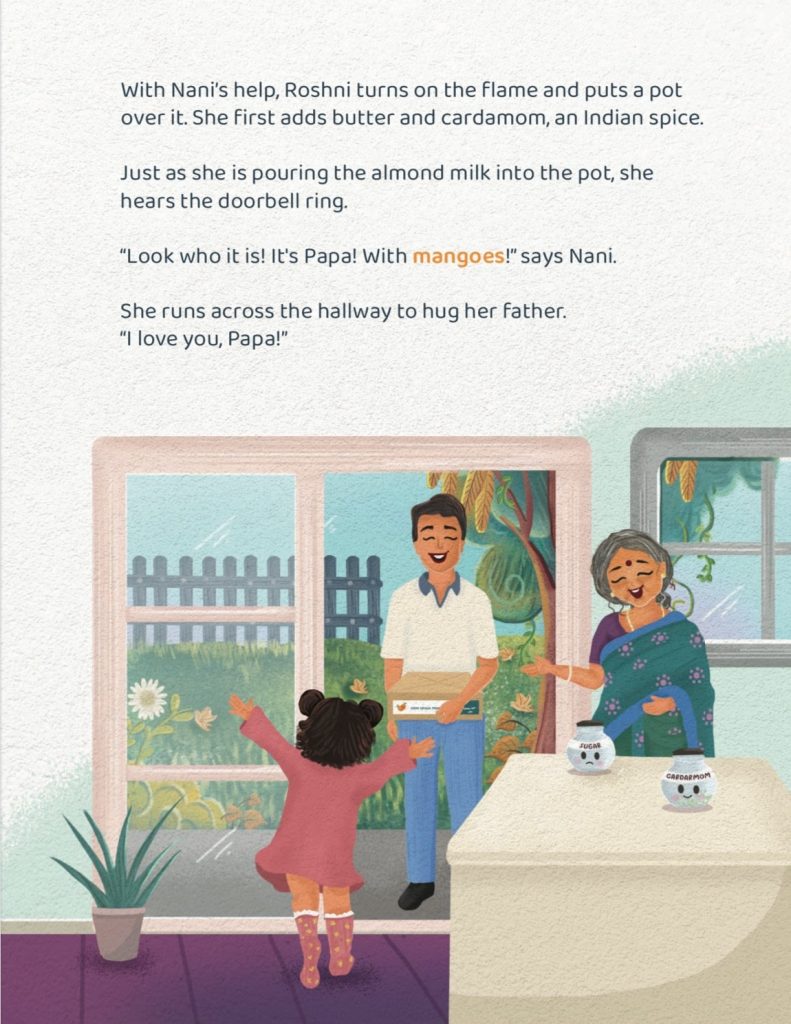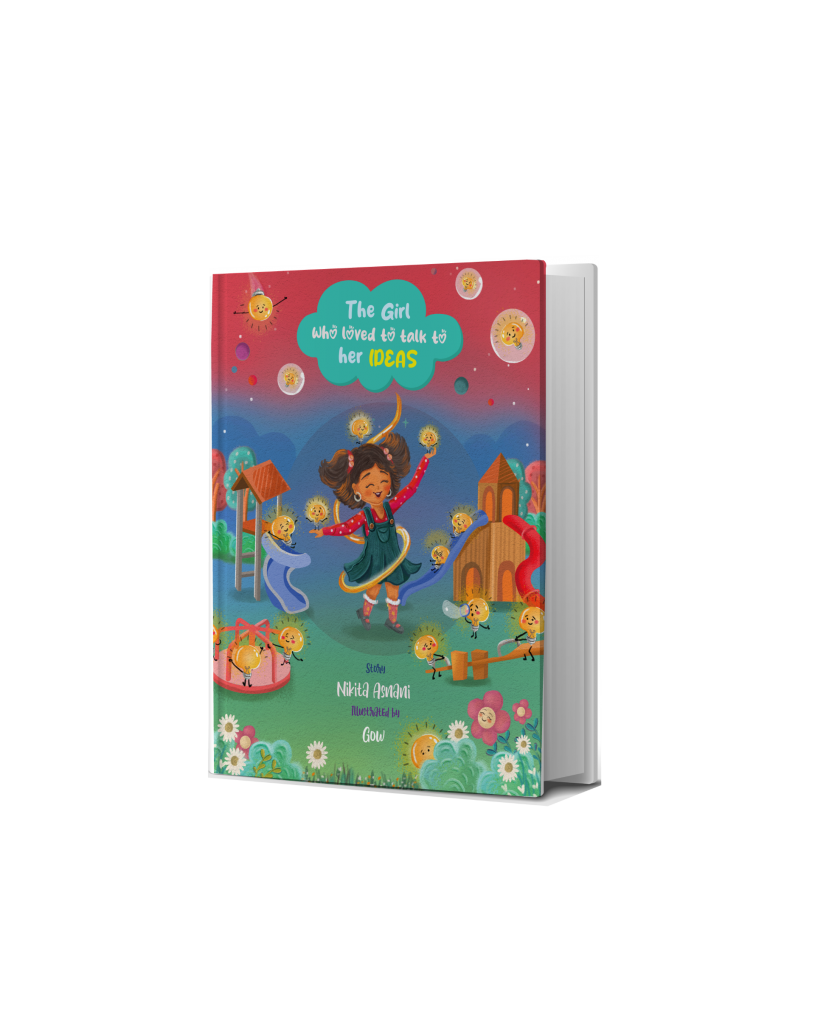Introducing The Girl Who Loved to Talk to Her Ideas: A Journey into Creativity, Safety, and Play by Nikita Asnani
What happens when a child’s ideas come alive? What if they play, grow, and learn alongside her? My debut children’s book, The Girl Who Loved to Talk to Her Ideas, explores these questions through creativity, resilience, psychological safety, and cultural connection.
The Story Behind The Story
Roshni, the book’s protagonist, is a young South Asian girl who loves to tinker with her ideas. But like all ideas, hers need nurturing, patience, and care. Through her journey—including a moment where her father brings her mangoes, and she notices that her Nani had soaked almonds overnight—Roshni discovers her imagination’s power for problem-solving and connection. Inspired by cultural nuances like soaking almonds and sharing food, the story grounds universal themes in a rich cultural narrative. These small details bring authenticity to Roshni’s world while showing children the beauty of resourcefulness and collaboration.

The Ideas Playground: Where Creativity Takes Shape
One of my favourite parts of the book is Roshni’s Ideas Playground—a magical space where her ideas don’t just stay in her head; they run, jump, rest, and grow, just like children do. Some ideas sunbathe lazily, not quite ready to be used. Others play together in groups, bouncing off each other to form something new. And then there are the ones that are napping, waiting for the right time to wake up.
Just like children, ideas have different ways of growing. Some children thrive in groups, bouncing ideas off one another and finding energy in collaboration. Others prefer to take their time, developing their ideas in solitude, letting them rest and take shape in their own space. Both ways are valid, and both are celebrated in the Ideas Playground. There is no single way to be creative—sometimes, ideas need conversation and energy, while other times, they need quiet and patience.
For parents, this mirrors something we see every day—kids often get frustrated when they feel stuck or when an idea doesn’t work right away. But what if we taught them that ideas need time to grow? That creativity isn’t just about constant action, but also about pausing, reflecting, and trusting the process? The Ideas Playground helps children (and adults!) see that creativity isn’t about pressure; it’s about patience and play.
The Role of Safety and Gratitude in Creativity
Psychological and emotional safety are the foundation of creative confidence. Roshni’s creativity thrives because she feels safe in her grandmother’s presence—safe to experiment, take risks, and trust her smallest ideas. This safety is nurtured through gratitude—appreciating the simple ingredients in their kitchen and the wisdom of her Nani. Gratitude, as shown in the story, creates an environment where Roshni feels free to play, imagine, and bring her ideas to life.
A Toolkit for Parents and Educators
To bring Roshni’s lessons to life, I’ve co-developed a free online resource toolkit, including:
- Lesson Plans: Activities like The Squiggly Path encourage problem-solving and sustainability.
- Cultural Exploration: A recipe sheet for peras connects food preparation with storytelling and family bonding.
- Creative Confidence Exercises: Affirmation activities foster resilience and self-expression.
- A Colouring page for younger children to bring to life their own Ideas Playground!
These resources make design thinking accessible for children while fostering culturally responsive learning. By integrating hands-on activities and storytelling, the toolkit supports parents and educators in nurturing creativity and confidence in children.
Connecting Families and Communities
Since its inception, the book and its activities have brought families together through workshops and events, such as the Resonate Festival at Leamington Library. Families engaged in storytelling, crafts, and colouring activities, fostering creativity and intergenerational connections. These events have sparked meaningful conversations about creativity, culture, and the importance of safe spaces for self-expression.
Why This Matters
In a world where children face pressure to achieve perfection, The Girl Who Loved to Talk to Her Ideas reminds them that creativity is a journey. It fosters a growth mindset, encouraging children to see mistakes as opportunities to learn. Through its focus on play, gratitude, and psychological safety, the story provides a model for creative exploration and self-expression. Additionally, it emphasizes the importance of cultural representation in children’s literature, offering young readers role models who look and live like them while inviting others to explore diverse worlds.
Join the Journey
Explore Roshni’s story and join this mission to nurture creativity, play, and safety. Whether you’re a parent, educator, or community member, this book and its resources offer a playful way to inspire the next generation of thinkers and dreamers.
Visit my website to learn more, download free resources.

Get your copy of The Girl Who Loved to Talk to Her Ideas on Amazon or Apple Books

